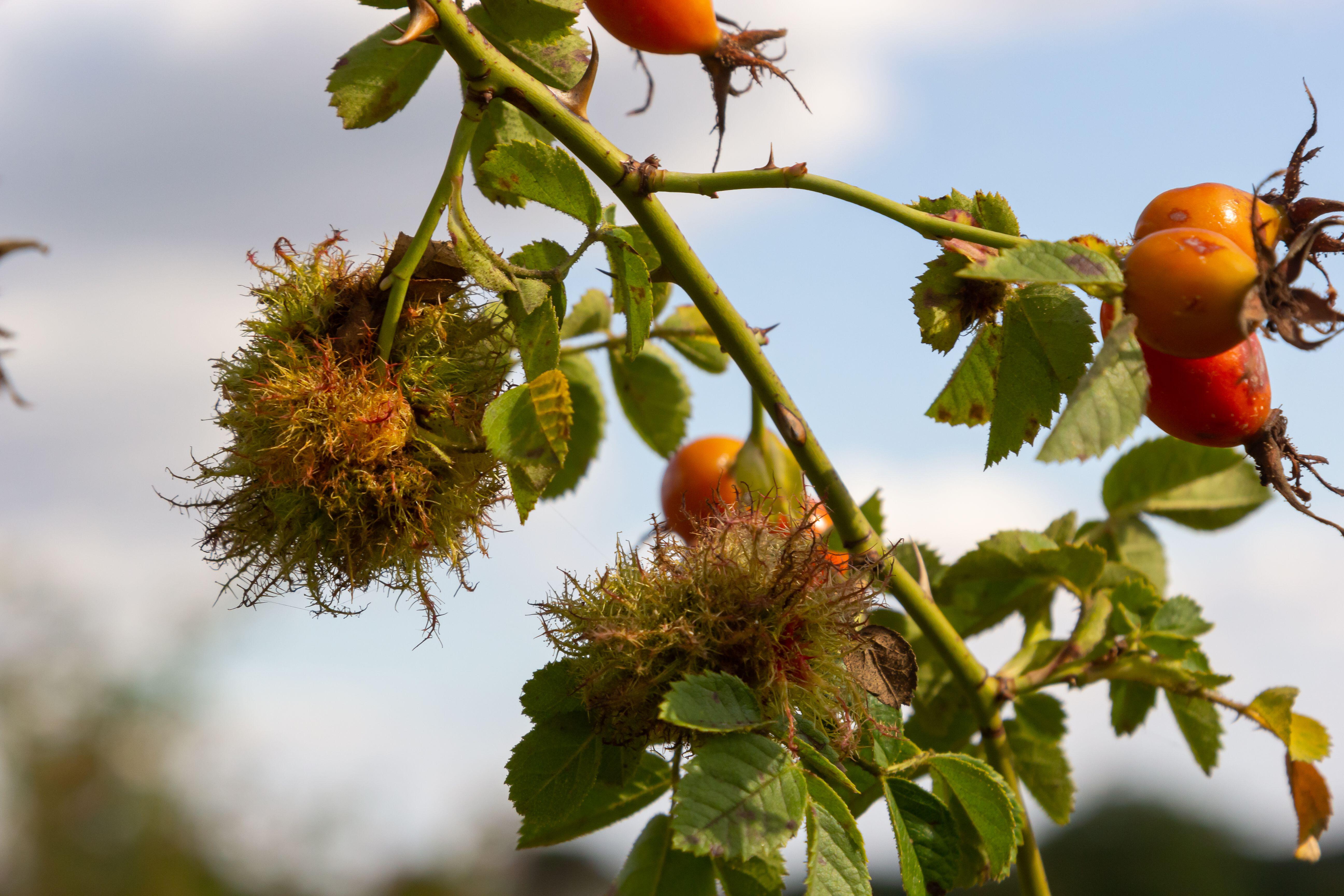Plant folklore - Robin's pincushions

Robin's pincushions, sometimes referred to as bedeguars (from the Middle French bedegard, and Persian bādāward) are distinctive galls that form on wild roses when the gall wasp, Diplolepis rosae, lays its eggs in rose buds during springtime. These interesting and eye-catching growths, which emerge as fuzzy, reddish-green formations, were once believed to possess medicinal and protective properties across various regions of Britain.
In 1860’s West Sussex, locals called these galls ‘Robin Redbreast's cushions’ and considered them an effective remedy for whooping cough, typically hanging them around a patient's neck. A similar belief persisted in the Isle of Axholme, Lincolnshire where residents thought that one of these ‘tossels’ from a wild rose hung up in the house could prevent the illness.
In Welsh folklore, placing a gall under one's pillow was thought to cure insomnia. It came with a word of warning however. If the gall wasn’t removed at a specific time the person would never wake up. In Northamptonshire during the mid-nineteenth century, schoolboys would cunningly place these ‘briar-balls’ in their coat cuffs, believing they would magically prevent corporal punishment.
Folk medical traditions varied by region. Shropshire residents in the 1880s believed that accidentally finding what they called a briar-boss and wearing it close to the body could cure toothache. Wiltshire inhabitants towards the end of the nineteenth century carried these galls in their pockets as a charm against rheumatism.







